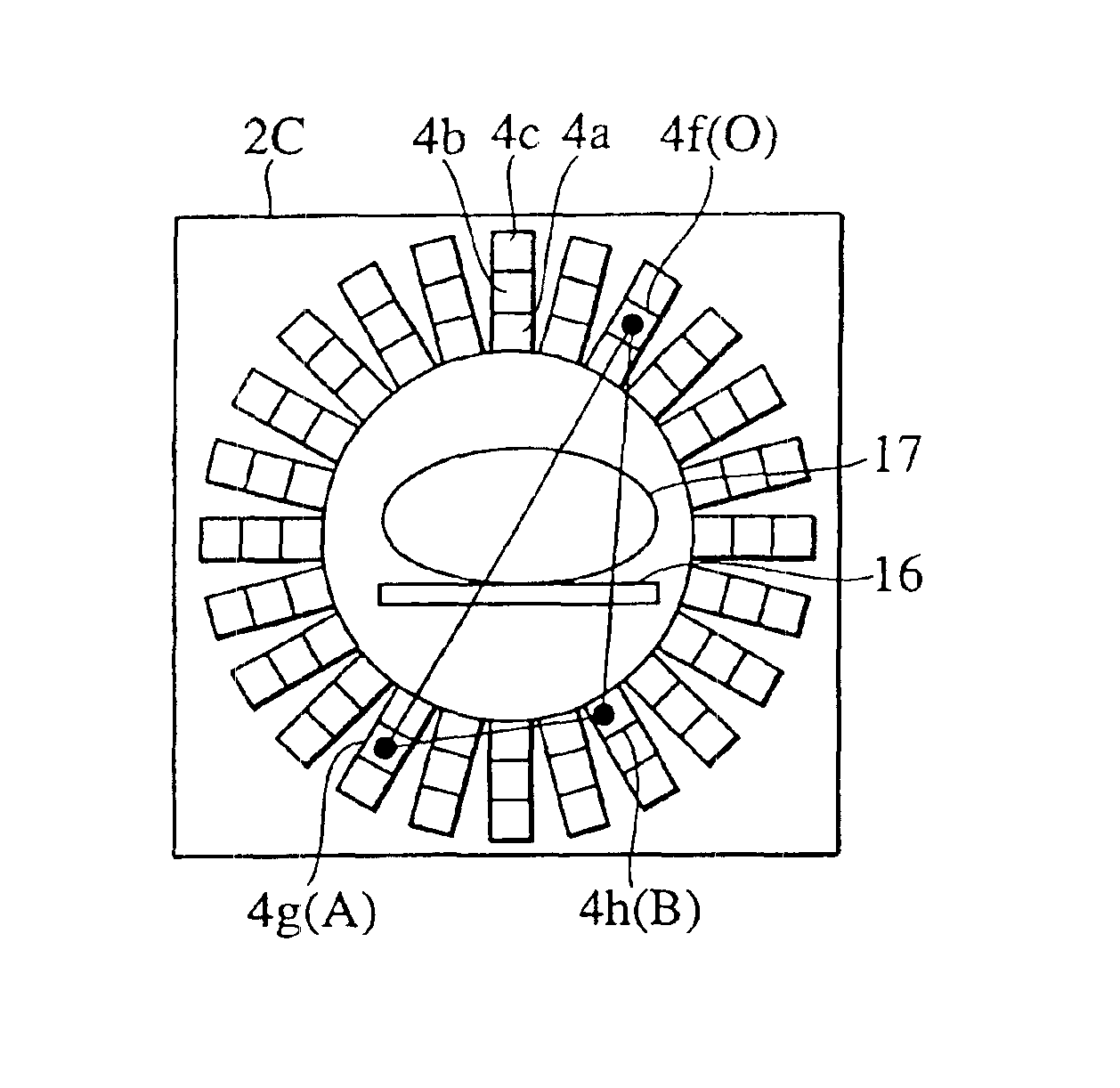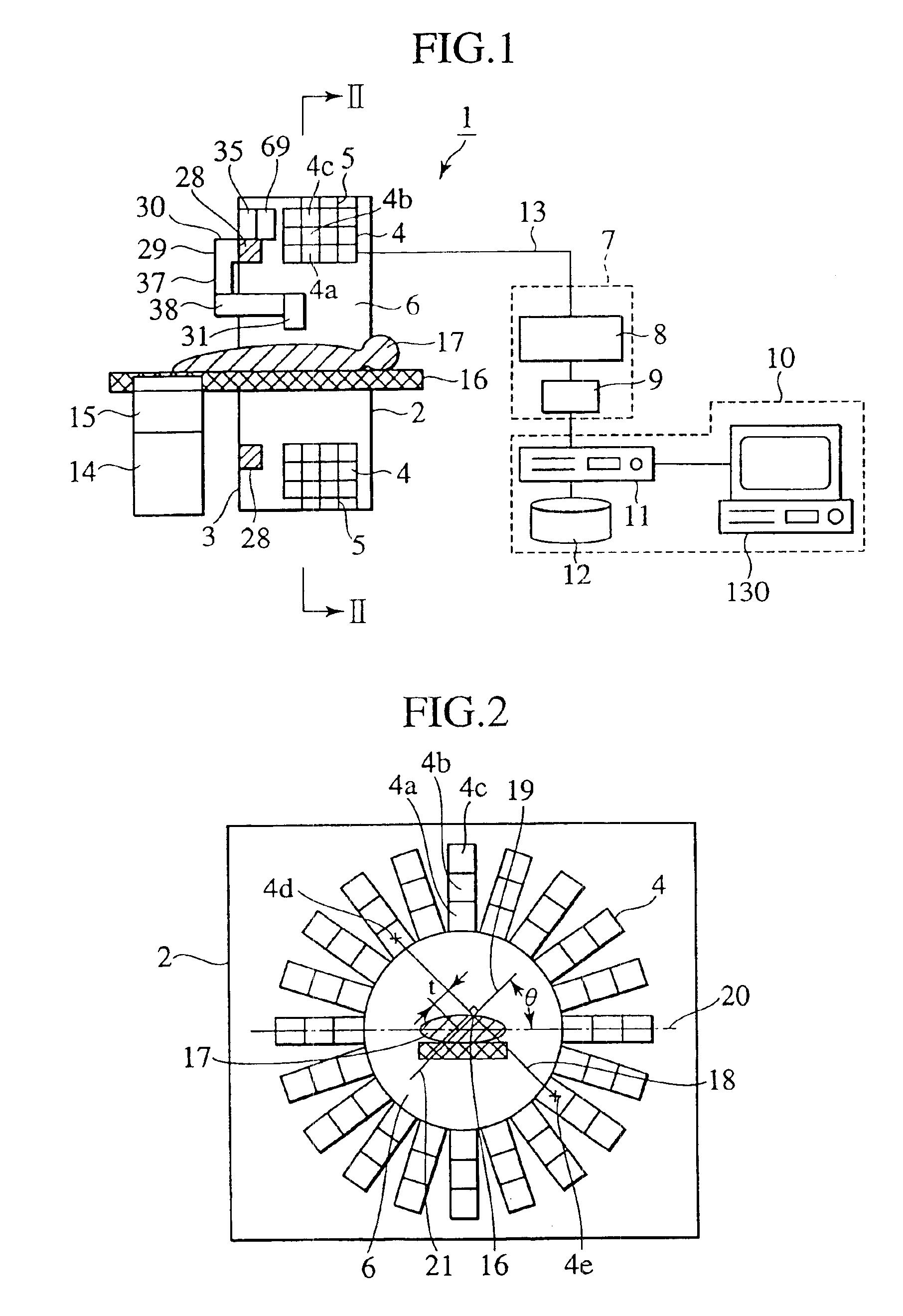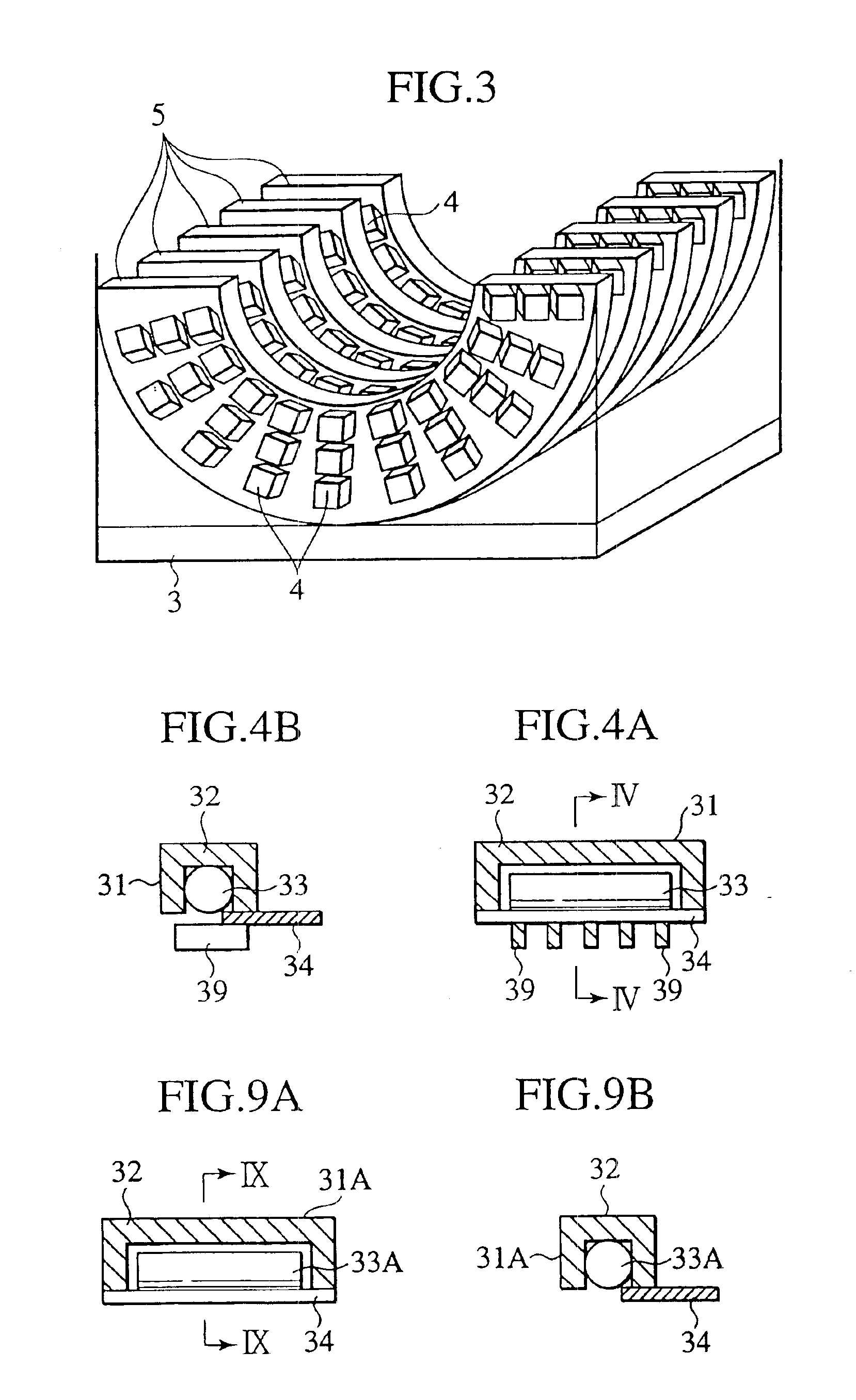Radiological imaging apparatus
a technology of radiological imaging and apparatus, applied in the field of radiological imaging apparatus, can solve the problems of reducing the amount of signal transmission substance, difficult to accurately measure and impaired correlation between the incident -ray energy and the signal generated by the doi detector, and achieves high efficiency and high-precision pet images
- Summary
- Abstract
- Description
- Claims
- Application Information
AI Technical Summary
Benefits of technology
Problems solved by technology
Method used
Image
Examples
embodiment 1
[0052]A radiological imaging apparatus according to a preferred embodiment of the present invention will be described below with reference to FIGS. 1 and 2. A radiological imaging apparatus 1 of Embodiment 1 is used for PET examination. This apparatus comprises an image pickup device 2, a signal processor 7, a tomogram generator 10, a medical examinee-holding device 14, a calibrated radiation source circumferential transfer unit 37, and a drive controller 35.
[0053]The image pick device 2 has a casing 3, a large number of radiation detectors 4, and a large number of radiation detector support plates 5. The casing 3 has an opening (through-hole) 6 into which a medical examinee or a subject is to be inserted. A large number of the radiation detectors (e.g., 10,000 radiation detectors in total) 4 are positioned around the circumference of the through-hole 6 and arranged in the axial direction of the through-hole 6. As shown in FIG. 2, the innermost radiation detectors 4 are circularly d...
embodiment 2
[0083]A radiological imaging apparatus of another embodiment (Embodiment 2) of the present invention will be described with reference to FIG. 8. The radiological imaging apparatus 1A of Embodiment 2 is used for SPECT examination. This apparatus 1A comprises an image pickup device 2A in place of the image pickup device 2 for the radiological imaging apparatus 1 and a signal processor 7A instead of the signal processor 7 for the radiological imaging apparatus 1. The other components of the radiological imaging apparatus 1A are the same as for the radiological imaging apparatus 1. The signal processor 7A includes a γ-ray discriminator 8A and a counter 36 connected to the γ-ray discriminator 8A, and is provided for each radiation detector 4. The γ-ray discriminator 8A has a filter energy setting of 120 keV although the filter energy setting for the γ-ray discriminator 8 in Embodiment 1 is 400 keV. The image pickup device 2A differs from the image pickup device 2 in that a collimator 27 ...
embodiment 3
[0093]A radiological imaging apparatus of another embodiment (Embodiment 3) of the present invention will be described with reference to FIGS. 10 and 11. The radiological imaging apparatus 1B of Embodiment 3 is used for X-ray CT examination (in which an X-ray emission from an X-ray source 60 passes through the body of a medical examinee and is detected by radiation detectors) and PET examination. This apparatus 1B comprises an image pickup device 2B in place of the image pickup device 2 for the radiological imaging apparatus 1 and a signal processor 7A instead of the signal processor 7 for the radiological imaging apparatus 1. The other components of the radiological imaging apparatus 1B are the same as for the radiological imaging apparatus 1. The image pickup device 2B uses a calibrated radiation source circumferential transfer unit 37B in place of the calibrated radiation source circumferential transfer unit 37 that is used for the image pickup device 2. The calibrated radiation ...
PUM
| Property | Measurement | Unit |
|---|---|---|
| energy | aaaaa | aaaaa |
| energy | aaaaa | aaaaa |
| energy | aaaaa | aaaaa |
Abstract
Description
Claims
Application Information
 Login to View More
Login to View More - R&D
- Intellectual Property
- Life Sciences
- Materials
- Tech Scout
- Unparalleled Data Quality
- Higher Quality Content
- 60% Fewer Hallucinations
Browse by: Latest US Patents, China's latest patents, Technical Efficacy Thesaurus, Application Domain, Technology Topic, Popular Technical Reports.
© 2025 PatSnap. All rights reserved.Legal|Privacy policy|Modern Slavery Act Transparency Statement|Sitemap|About US| Contact US: help@patsnap.com



